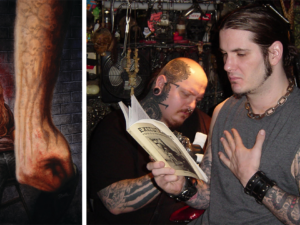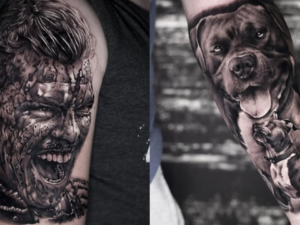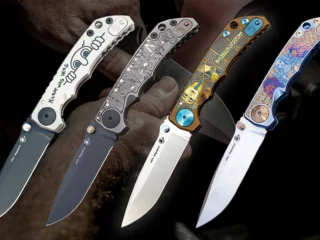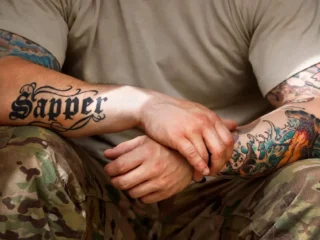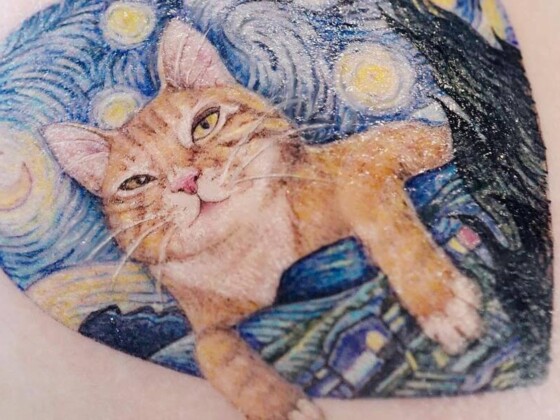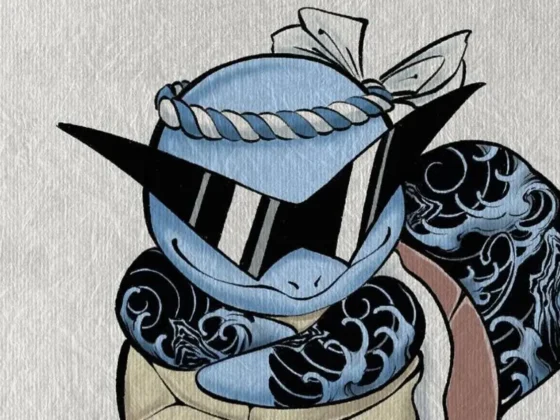Inked Mag
October 30th, 2018
Holocaust Survivor Married Man Who Tattooed Her ID Number
Ludwig "Lale" Eisenberg tattooed Gita Sokolov’s five-digit identification number in Auschwitz. Some say strange coincidence— others say fate.

Lale was the Auschwitz camp’s Tätowierer, or tattooist, where he had inked thousands of inmates’ identification numbers. Gita was one of those prisoners.
Lale’s memoir “The Tattooist Of Auschwitz”, written by Heather Morris, reveals when Lale and Gita were separated after the camp’s liberation, Lale bartered Nazi gems for food and medicine for those in need.

Several months after the war, Gita was in Slovokia and accidentally stepped in front of a horse and cart. That cart was driven by Lale. Some say strange coincidence— others say fate. The two Holocaust survivors married in October 1945.
The couple’s love story went from fleeing Auschwitz to starting a textile business in Australia. They soon had their baby in 1961, and named him Gary.

Lale hadn’t shared his story, or his secret love, until Gita’s death, for fear of being perceived as a Nazi collaborator.
Starting from autumn in 1941 to the spring of 1943, all prisoners at the death camp had been tattooed.
These forced tattoos are most recognizable for their shakiness. Only prisoners at Auschwitz, Birkenau, and Monowitz, were tattooed.

In the beginning of the process, a metal stamp was used brand the entire number into the skin. Then, ink was rubbed into the open wound. Eventually, the SS introduced a twin-needle device that Lale used during his time as a tattooist.
When Gita was brought to Lale in July 1942, Lale had hesitations. “Tattooing men was one thing, but the thin arm of a young girl made him feel horrified,” Morris said.
Late was told he had to tattoo the digits on the paper handed to him, 3 4 9 0 2, or he would be condemned to death.
“There is something about this girl and her bright eyes,” Lale said.
Years later, Lale will tell Morris how in that moment, as he tattooed her number on her left arm, she tattooed her number in his heart.

Lale, had died at 90-years-old, but his legacy as the tätowierer lives on.
Heather Morris said that a woman told her that her father “owed his life to Lale,” without ever having known his real identity.
“A much older man had volunteered to take his place and Lale had re-inked their numbers in secret, swapping their identities,” Morris said. “That teenager grew into a man, got married, had a family and a future because of the tattooist.”
It had taken Morris two to three visits a week, for three years, for Lale to piece together those memories.
“He was very skilled at shutting down his past,” she said. “He had survivor’s guilt, a pain he’d buried for 60 years.”

Late had kept this secret so close to him, because many people who saw the prisoners who worked for the SS at the camps as being an affiliate with the brutality.
However, he did what he had to to survive. “He said he wasn’t told he could have this job or that job,” says Morris. “You took whatever was being offered. You took it and you were grateful because it meant that you might wake up the next morning.”
The “Tattooist Of Auschwitz”, has become a global bestseller, and BBC is now turning it into a TV series. It will broadcast by 2020, just before the 75th anniversary of the liberation of the camp.

Editor's Picks
Paul Booth Illustrates Cover for Pantera Graphic Novel
The revered tattoo artist created a cover for a graphic novel celebrating the 30th anniversary of “Vulgar Display of Power”
Scary Spider Tattoos
Spiders are terrifying, yet for some reason people sure do love to get tattoos of them


